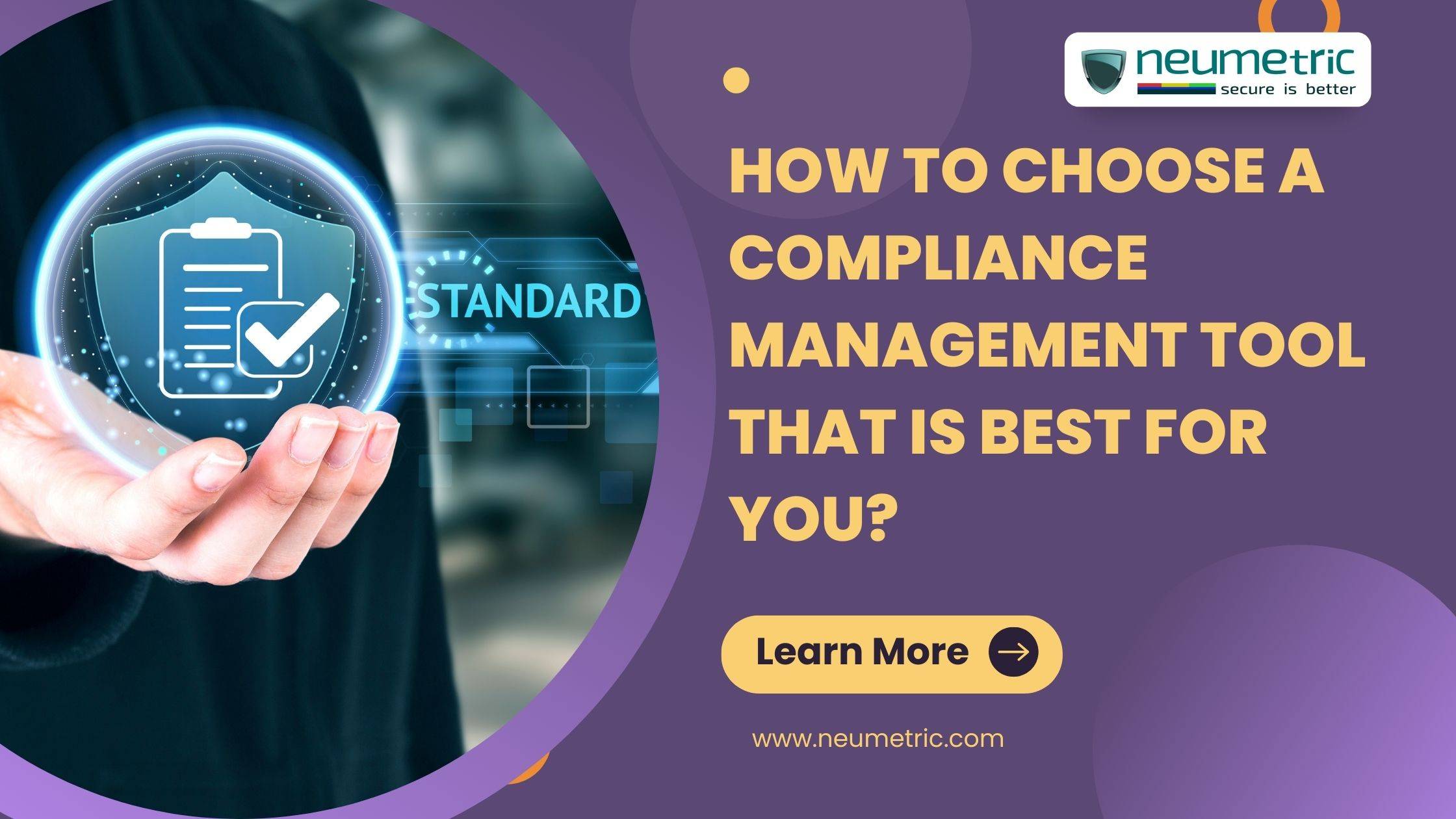Table of Contents
ToggleIntroduction
In an era characterized by rapidly evolving regulations and a complex global business environment, compliance is no longer a mere checkbox but a critical component of sustainable operations. As organizations grapple with an array of legal and regulatory requirements, the role of effective tools to manage this vast and intricate field becomes indispensable. Enter compliance management tools – solutions designed to simplify, streamline & strengthen compliance processes.
What are Compliance Management Tools?
At their core, Compliance Management Tools (CMTs) are specialized software or platforms designed to aid organizations in aligning their operations with established regulatory and legal standards. These tools not only help track current compliance status but also forecast potential future regulatory challenges.
Key Functions Include:
– Risk Assessment: Evaluate potential risks and vulnerabilities in current processes.
– Documentation Control: Store, manage & retrieve vital compliance documents efficiently.
– Audit Management: Facilitate and manage both internal and external audit processes.
– Training and Education: Offer modules to ensure that staff understands compliance requirements and procedures.
– Incident Management: Track and manage any compliance violations or incidents, ensuring they are addressed promptly.
These tools, through automation and integration, ensure that every facet of an organization is in harmony with the legal standards it needs to uphold, minimizing human errors and maximizing efficiency.
Why Do You Need One?
In today’s digital age, where data flows freely and business operations span continents, maintaining compliance can be a Herculean task. This is where compliance management tools shine.
Benefits Include:
– Efficiency: Automated workflows mean reduced manual tasks, leading to quicker and more efficient compliance processes.
– Consistency: With a centralized system, companies can ensure a consistent application of compliance procedures across all departments and branches.
– Visibility: These tools provide a bird’s eye view of the organization’s compliance posture, allowing for proactive management rather than reactive measures.
– Reduction in Liabilities: Effective compliance management reduces the chances of violations, thereby diminishing potential financial and reputational risks.
On the flip side, the consequences of non compliance can be dire. From hefty fines and sanctions to reputational damage and loss of consumer trust, organizations stand to face significant setbacks if they fall afoul of regulatory standards. In some cases, noncompliance can even lead to legal actions and forced cessation of operations.
Key Considerations When Choosing a Compliance Management Tool
In a world increasingly guided by regulations and compliance standards, finding the right tool to navigate this complex landscape can make the difference between seamless operations and unforeseen pitfalls. However, with the plethora of compliance management tools available, how does one make an informed choice? Here are the essential factors to consider:
1. Industry-Specific Needs
Every industry, from healthcare to finance, comes with its own set of compliance standards and regulations. Hence, a one-size-fits-all tool might not address specific needs.
– Relevance: Tools should be aligned with the particular regulatory standards of an industry, whether it’s HIPAA for healthcare or GDPR for data protection in the EU.
– Regular Updates: Ensure the tool is updated as per the latest industry regulations, minimizing compliance drift.
2. Ease of Use
A tool’s sophistication is of little use if it’s not user-friendly.
– User Interface: Simple, intuitive interfaces facilitate quicker onboarding and better usage.
– Support: Look for tools that offer robust customer support, tutorials & training modules.
3. Scalability
As your organization expands, your compliance needs will evolve.
– Modular Design: Tools should allow adding features or modules as and when needed.
– Growth Compatible: Should cater to the needs of an expanding user base, more extensive data sets & increased operational complexity.
4. Integration Capabilities
No tool operates in isolation. Integration with existing systems is crucial for holistic compliance management.
– Seamless Integration: Should effortlessly merge with current systems like CRM, ERP, or HR software.
– Open APIs: Facilitate integration with third-party tools and future software acquisitions.
5. Customization
Every organization has its unique compliance challenges.
– Tailored Solutions: The ability to adjust features, reporting formats & alert mechanisms to fit specific needs.
– Custom Reports: Generate reports as per organizational requirements, aiding in better decision-making.
6. Real-Time Monitoring and Alerts
Immediate awareness of potential issues is crucial for effective compliance management.
– Instant Alerts: Immediate notifications about compliance drifts or potential breaches.
– Automated Reporting: Scheduled or triggered reports ensuring management stays informed.
7. Data Security and Privacy
With data breaches becoming increasingly common, security is non-negotiable.
– High Standards: Adherence to global data protection standards like GDPR or CCPA.
– Robust Security Measures: Features like end-to-end encryption, multifactor authentication & regular security audits.
8. Cost and Budget Considerations
Value for money is vital in ensuring a sustainable compliance management strategy.
– Transparent Pricing: Clear understanding of pricing models – whether they’re subscription-based, per user, or feature-based.
– ROI: Analyze the potential savings from avoiding non-compliance penalties versus the cost of the tool.
Key Features to Look for in a Compliance Management Tool
Navigating the intricate maze of compliance requires a tool that’s not just robust but also intuitively designed. As the backbone of your compliance strategy, your chosen software should ideally possess a set of core features to ensure your organization remains on the right side of regulations. Here’s a deeper dive into these critical features:
1. Audit Trails
A comprehensive record of activities related to compliance can be invaluable, both for internal reviews and for official audits.
– Detailed Logging: Every action, from document edits to system changes, should be logged with details like user ID, timestamp & the nature of the change.
– Historical Data: This provides a retrospective view, letting organizations see patterns, make improvements, or spot irregularities. It’s not just about capturing changes but understanding the evolution of your compliance journey.
2. Dashboards and Visual Reporting
In the fast-paced corporate world, quick insights can be the difference between compliance and inadvertent breaches.
– At-a-Glance Insights: Dashboards should provide an immediate view of your organization’s compliance health, highlighting areas that need attention.
– Data Visualization: Bar graphs, pie charts, heat maps & more. Visualization tools make complex data digestible, aiding faster decision-making. They translate raw data into actionable insights, ensuring that even those without technical expertise can understand.
3. Automated Workflows
Automation can streamline the often-tedious processes related to compliance management.
– Process Efficiency: From triggering reviews when a document is updated to setting reminders for upcoming audits, automated workflows ensure no step is missed.
– Task Automation: This eliminates manual interventions, reducing errors. For instance, if a new regulation requires a specific document update, the system could automatically notify the responsible teams and even provide a checklist of required actions.
4. Document Management
Given that compliance is intrinsically tied to documentation, efficient document management is non-negotiable.
– Centralized Repository: All compliance-related documents, from policies to proof of training, should be stored in one accessible yet secure location. This simplifies access and enhances collaboration.
– Version Control: Compliance isn’t static. As regulations change, so will your documents. Version control ensures that teams always work on the latest document, with the ability to roll back if needed. It also offers an audit trail of edits, crucial for understanding changes over time.
– Easy Retrieval: An intuitive search function can save precious time, allowing users to quickly find documents or specific sections within them based on keywords or tags.
In essence, while the above features are foundational for any good compliance management tool, it’s also vital to ensure that the chosen tool aligns with the industry-specific needs of your organization. Investing in a tool that synergizes with your unique requirements will undoubtedly lead to more streamlined and effective compliance management.
Evaluating and Testing Tools
In the complex realm of compliance management, selecting the right tool can make all the difference. But how do you ensure the tool aligns with your organization’s unique needs? Here’s a step-by-step guide to effectively evaluate and test potential compliance management solutions.
1. Requesting Demos and Trials
Engaging with a tool firsthand can offer invaluable insights into its capabilities and suitability for your organization.
– Hands-on Experience: There’s no substitute for direct interaction with a tool. A hands-on trial provides a feel of the software’s interface, usability & functionality. It can also highlight potential shortcomings or areas where customization may be required.
– Checklist Creation: Before the demo, prepare a checklist of essential features and functionalities specific to your organization’s needs. This helps ensure that the evaluation remains objective and comprehensive. It can cover aspects such as integration capabilities, reporting tools, customization options & user support.
2. Seeking Reviews and Recommendations
Taking a collective approach to decision-making can often bring to light considerations you might have overlooked.
– Peer Insights: Colleagues or peers from similar industries can provide firsthand accounts of their experiences with specific tools. They might highlight unforeseen challenges or advantages that you hadn’t considered.
– Online Reviews: Websites and forums dedicated to software reviews can be goldmines of information. They often provide detailed user experiences, ratings & comparisons. However, ensure you consult reputable platforms and consider the volume of reviews to get a balanced perspective.
3. Post-Implementation Evaluation
Your relationship with a compliance management tool doesn’t end at purchase. Continuous assessment ensures it remains aligned with your evolving needs.
– Performance Metrics: After integrating the tool, set key performance indicators (KPIs) to evaluate its efficacy. This could include metrics related to user engagement, speed of task execution, error rates & more.
– Feedback Loops: Encourage team members to provide feedback. Their daily interactions with the tool can offer crucial insights into areas of improvement or refinement.
– Regular Reviews: Periodically, conduct formal reviews of the tool’s performance. This not only evaluates its current effectiveness but also assesses its scalability for future requirements.
Conclusion
The journey of selecting a compliance management tool is a nuanced one, deeply intertwined with the specific needs and challenges of your organization. As such, it’s imperative to approach this decision with a well-informed mindset, emphasizing due diligence and continuous evaluation. Remember, the goal is not just to find a tool that meets present needs but one that can adapt and grow with your organization. Prioritizing compliance today, with the right tools in hand, ensures a more seamless, efficient & resilient future for your organization.





